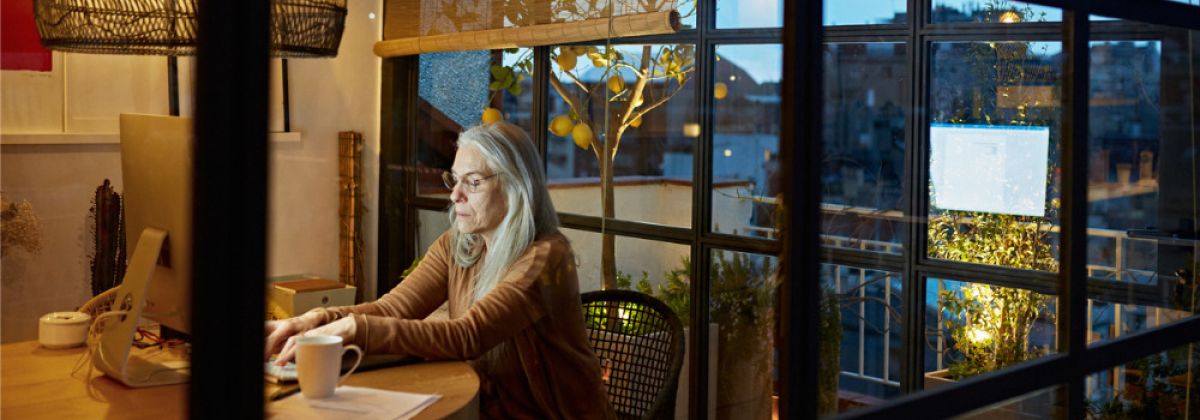
20 Sep 2022
With hybrid workplaces becoming the norm, it's a good time for organisations to assess their OHS policies when it comes to employees' home offices and habits. Here's how
Geoff Dawes, Product Owner for Frontier Software's Workplace Health and Safety (WHS21) module sat down with Mel Hearse from HRD to discuss OHS risks in working from home workforces – and how to handle them.
Hybrid offices are likely here to stay in one form or another, and to this end, Geoff Dawes, Product Owner for Frontier Software's Workplace Health and Safety module says savvy employers need to consider how this might change their OHS obligations.
Policies create clarity
Given they have different dynamics and responsibilities to office-based work, Dawes says home offices should be considered in policy statements, noting articulating the boundaries may save confusion down the track.
“A policy outlining how the employer and employee have a shared responsibility to ensure that the home-based workspace is safe, but that the employer's responsibility does not extend beyond the home workspace area is a common example,” he tells HRD Australia.
For example, while a blocked toilet or faulty wiring are obvious health and safety issues, it is not necessarily the employer's responsibility to remediate these. Along a similar vein, he says it is reasonable for a policy to define the areas considered primarily the employee's responsibility - particularly where these are traditionally the employer's domain in an office-based environment.
This may include the employee being required to ensure their workspace is adequately lit and powered, well ventilated, regularly cleaned and free of tripping hazards. Taking this a step further, it is reasonable to require that the employee comply with all applicable policies in their home office that apply at work.
“I heard of a case where someone who was working in their pyjamas tripped on the dressing-gown cord and sued their employer. A simple policy setting that required employees to wear work-appropriate attire could have saved a lot of headaches,” says Dawes.
To inspect or not to inspect?
When it comes to whether or not a company physically inspect and certify home offices, Dawes says there's no one-size-fits-all answer.
“A physical inspection is obviously ideal, but smaller organisations may not have a dedicated WHS Department, and the cost of hiring an external consultant to inspect everyone's home office may be significant. Another consideration is that while employees have a right to a safe work environment, they also have a right to privacy and to protect their family from possible exposure to COVID.”
To this end, Dawes says organisations should consider consulting with their employees on a person-by-person basis before proceeding with an inspection. This should be backed with a clear and documented understanding that the organisation will not be liable for any safety outcome that could reasonably have been avoided if an inspection had been conducted.
Photographic evidence is an obvious (although less rigorous) alternative to inspection by a qualified WHS practitioner.
“In the absence of a physical inspection, consider also requiring employees to satisfactorily complete a safety checklist that addresses key areas such as lighting, ventilation, seating and cabling that may not always be clear from a photograph.”
Workplace wellbeing
The responsibility for workplace wellness is the same as it would be in the office, Dawes saying things like encouraging physical activity in the home workspace as in the office is still an expectation.
When it comes to mandating ‘away-from-desk time’ for home-based employees, Dawes notes whatever policies apply in the office should be readily transferrable to the home workspace. That said, the home office sometimes does double duty as an out-of-hours study, entertainment facility and the obvious place to check your social media accounts.
“There is the real possibility that an employee can work a full day at their desk then stream videos there all evening. Given that an organisation cannot usually control what goes on outside work hours, it is reasonable to try and mitigate situations like these by paying greater attention to "away-from-desk-time" during the working day.”
Capturing risk
When you’ve set your safety policies and checks in place, the next step is to ensure there is an easy way to enable employees to capture risks and hazards and report incidents.
“We have developed an app specifically for reporting hazards and safety incidents. Everyone who deploys our Workplace Health & Safety software can install the app on their phone and lodge real-time safety reports with their manager or WHS Department.”
In the absence of a purpose-built solution, Dawes suggests employees be given clear instructions on who to contact in case of a hazard or safety incident, including email and phone numbers for their OHS representative.
“I would encourage safety reports to include a photo of the problem. One of our clients found that their hazard resolution rates were improved by some 80% when the report included photographs,” he says.
Dawes says safety should be proactive as well as reactive, and the dynamics of the home office can unfortunately lead to increased risks that do not always show up in a WHS inspection, for example, isolation related issues.
“Organisations should consider a regular ‘touch base’ - perhaps even in the form of a quick survey - that aims to determine whether employees feel safe and well supported at home. Attention should be paid on an individual basis to staff whose responses might indicate an underlying problem,” he says.
Article originally published in HRD magazine, September 2022.

